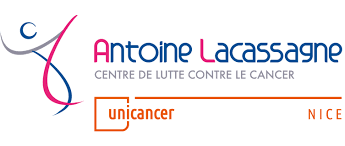Metabolomic Signatures of Scarff–Bloom–Richardson (SBR) Grade in Non-Metastatic Breast Cancer
Résumé
Purpose: Identification of metabolomic biomarkers of high SBR grade in non-metastatic breast cancer.
Methods: This retrospective bicentric metabolomic analysis included a training set (n = 51) and a validation set (n = 49) of breast cancer tumors, all classified as high-grade (grade III) or low-grade (grade I-II). Metabolomes of tissue samples were studied by liquid chromatography coupled with mass spectrometry.
Results: A molecular signature of the top 12 metabolites was identified from a database of 602 frequently predicted metabolites. Partial least squares discriminant analyses showed that accuracies were 0.81 and 0.82, the R2 scores were 0.57 and 0.55, and the Q2 scores were 0.44431 and 0.40147 for the training set and validation set, respectively; areas under the curve for the Receiver Operating Characteristic Curve were 0.882 and 0.886. The most relevant metabolite was diacetylspermine. Metabolite set enrichment analyses and metabolic pathway analyses highlighted the tryptophan metabolism pathway, but the concentration of individual metabolites varied between tumor samples.
Conclusions: This study indicates that high-grade invasive tumors are related to diacetylspermine and tryptophan metabolism, both involved in the inhibition of the immune response. Targeting these pathways could restore anti-tumor immunity and have a synergistic effect with immunotherapy. Recent studies could not demonstrate the effectiveness of this strategy, but the use of theragnostic metabolomic signatures should allow better selection of patients.
Domaines
Santé| Origine | Fichiers éditeurs autorisés sur une archive ouverte |
|---|
